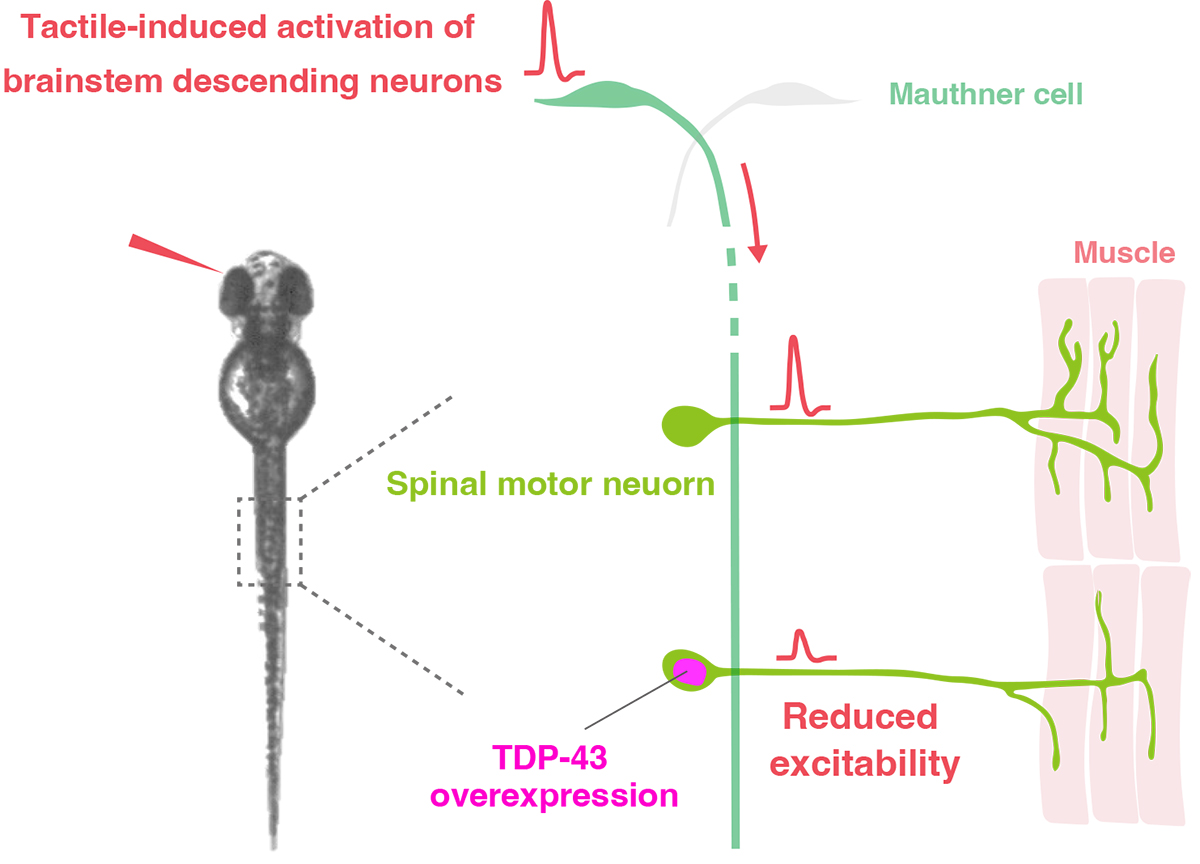A potential key mechanism underlying ALS: Excessive TDP-43 protein decreases motor neuron excitability.
Dysregulated TDP-43 proteostasis perturbs excitability of spinal motor neurons during brainstem-mediated fictive locomotion in zebrafish
Kazuhide Asakawa, Hiroshi Handa, Koichi Kawakami
evelopment, Growth & Differentiation 2023 July 15 DOI:10.1111/dgd.12879
Amyotrophic lateral sclerosis (ALS) is a debilitating disease that causes muscle weakness and eventually fatal paralysis. A major hallmark of ALS is the deposition of the aggregate form of TDP-43 protein in motor neurons, a type of nerve cell that directs muscle contractions. This motor neuron pathology can occur without genetic mutations in the coding sequence of the TDP-43-encoding gene TARDBP. Whether and how wild-type TDP-43 drives pathological changes in motor neurons remain largely unexplored.
In the present study, Asakawa and colleagues used calcium imaging to directly compare the neural activity of motor neurons with and without excessive TDP-43 protein during fictive locomotion. They found that excessive amounts of TDP-43 protein reduced the excitability of motor neurons (Figure). This finding suggests that the reduced excitability caused by excessive TDP-43 potentially contributes to asymptomatic pathological lesions of motor neurons and movement disorders in patients with ALS.
This work was published in the journal Development Growth & Differentiation on the 15th of July, 2023. The study was conducted by a collaborative research group comprising the National Institute of Genetics (Kazuhide Asakawa and Koichi Kawakami) and Tokyo Medical University (Hiroshi Handa).
This work was supported by the Nakabayashi Trust For ALS Research (K.A.), The Kato Memorial Trust For Nambyo Research (K.A.), Daiichi-Sankyo Foundation of Life Science (K.A.), Takeda Science Foundation (K.A.), KAKENHI grant numbers JP16K07045 (K.A.), JP19K06933 (K.A.), JP22H02958 (K.A.), JP23H04266 (K.A.), JP21H02463 (K.K.) and AMED-PRIME grant number JP23gm6410011h0003 (K.A.), and the National BioResource Project (NBRP) (K.K.).

Figure: Excessive amounts of TDP-43 protein reduce motor neuron excitability















